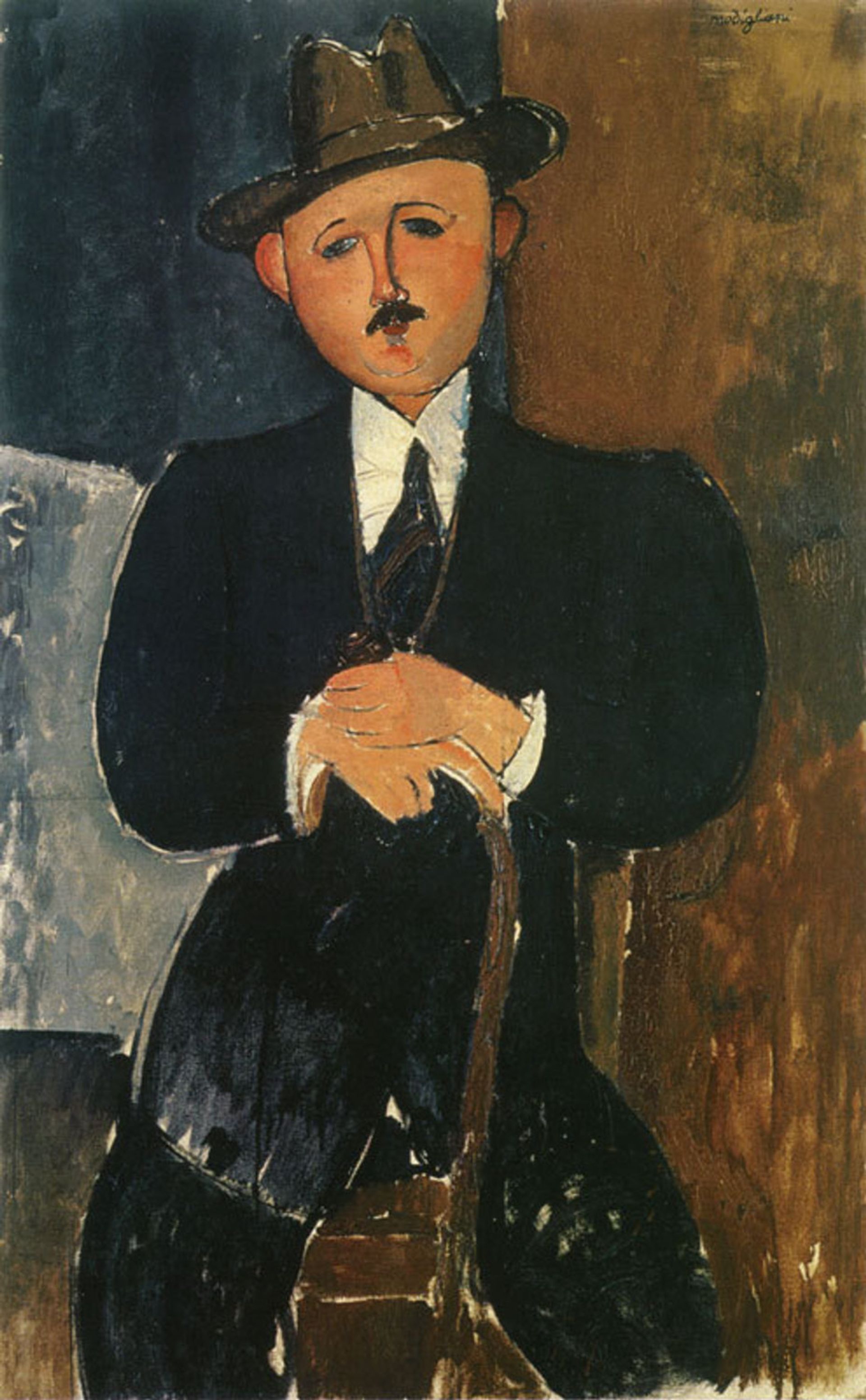The International Consortium of Investigative Journalists (ICIJ) has turned its attention to the art world in its ongoing examination of documents leaked from Mossack Fonseca, a Panama-based law firm specialising in wealth management.
The ICIJ has revealed that a painting by Modigliani that is being claimed by the grandson of Oscar Stettiner, a Jewish gallery owner whose art was seized by the Nazis, is owned by a company controlled by the Nahmad family of art dealers, who have previously denied that the work was in their possession.

The canvas in question, Seated Man with a Cane (1918), was bought by the Nahmads at auction in 1996, reports the ICIJ. They paid just over £2m for the painting at Christie’s London in June of that year. In November 2008, the Nahmads tried to sell the work at Sotheby’s New York with an estimate of $18m to $25m, but there were no bids on the canvas.
In 2011, Philippe Maestracci, Oscar Stettiner’s grandson, sued the Nahmads in US federal court for the return of the Modigliani; the suit was withdrawn after the Nahmads said that the painting was owned by a company called the International Art Center and not by them.
Three years later, in February 2014, the administrator of the Stettiner estate sued the Nahmads again, arguing that the International Art Center is a Panamanian shell company, which is an “alter ego of David Nahmad and other Nahmad family members”, according to the court papers. “The Nahmads have insisted in federal and state court in New York that the family does not possess the Modigliani,” the ICIJ reports.
But the leaked Mossack Fonseca documents show that “the Nahmad family has controlled the Panama-based company International Art Center (IAC) for more than 20 years… David Nahmad, the family leader, has been the company’s sole owner since January 2014”, the ICIJ reports. Mossack Fonseca first set up the IAC for the Nahmads in 1995.
When the ICIJ confronted David Nahmad’s lawyer, Richard Golub, with documentation showing that the Nahmads own the International Art Center, Golub said: “Whoever owns IAC is irrelevant. The main thing is: what are the issues in the [ongoing] case, and can the plaintiff prove them?”
The Ganz auction The ICIJ has also shed new light on an auction of Modern art at Christie’s New York in November 1997. The sale of work collected by Victor and Sally Ganz included pieces by Picasso, Jasper Johns, Robert Rauschenberg and many others. It made a then record $206.5m and “proved a milestone in the transformation of art into a global commodity”, the ICIJ writes.
The Mossack Fonseca papers show that many of the key works in the Ganz collection were sold six months before the Christie’s auction to a company called Simsbury International Corp. This was set up in Niue, an island in the South Pacific, and administered by Mossack Fonseca. The works were sold to Simsbury for $168m from Spink & Son, the London auction house then owned by Christie’s, according to the ICIJ.
The man who controlled Simsbury was the British billionaire Joseph Lewis, who was then the richest man in England and the largest shareholder at Christie’s. The terms of the deal stipulated that the Simsbury-owned works would still be offered for sale as part of the Ganz collection at Christie’s: if they made more than Simsbury had paid for them, Lewis and Spink & Son would share the difference, the ICIJ reports.
The Ganz family and Lewis declined to speak to the ICIJ about the revelations.
Agents to the art world The offshore dealings of other major art collectors are also detailed by the ICIJ. Mossack Fonseca’s records mention “enough art to fill a small museum”, they report.
Chen Dongsheng, the founder and chairman of China Guardian, the world’s third biggest art auction house after Sotheby’s and Christie’s, and grandson-in-law of Mao Zedong, is one of many rich Chinese businessmen and political leaders who have moved assets offshore. He is the sole director and shareholder of Keen Best International Limited, a company set up by Mossack Fonseca in the British Virgin Islands in 2011.

